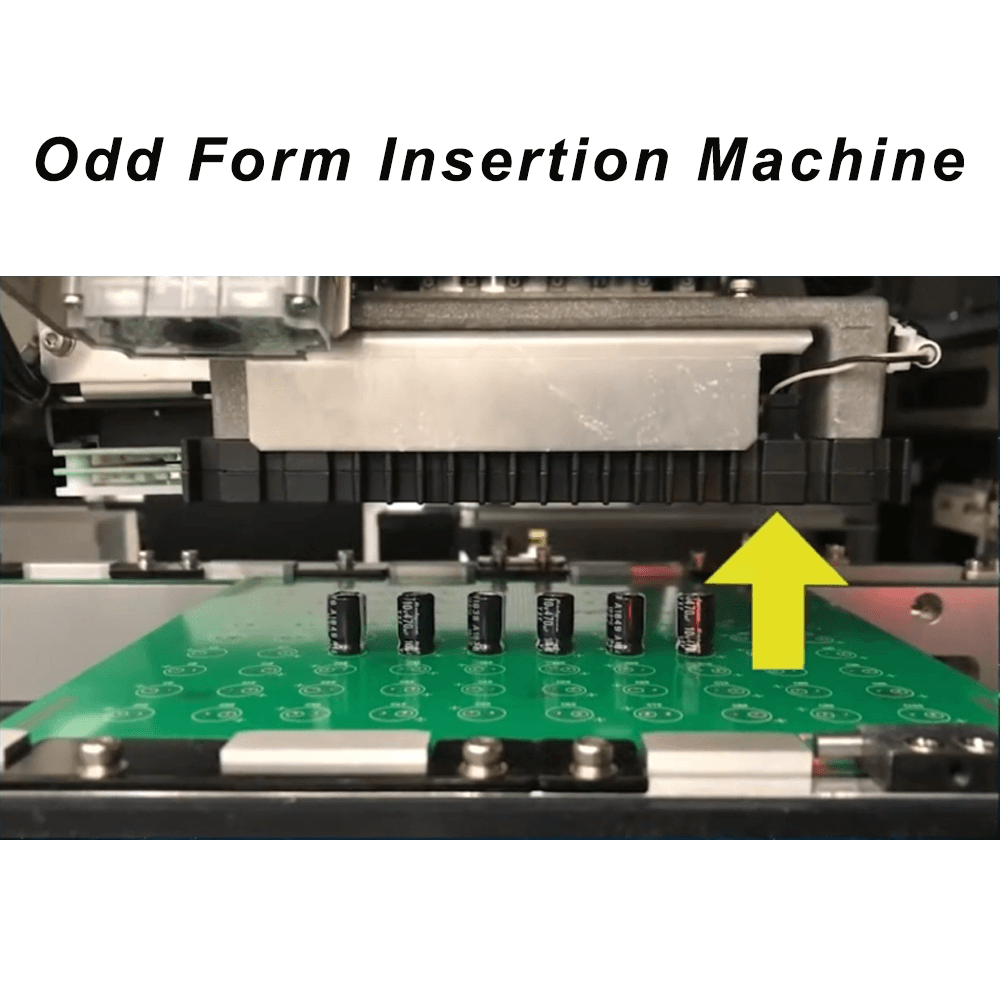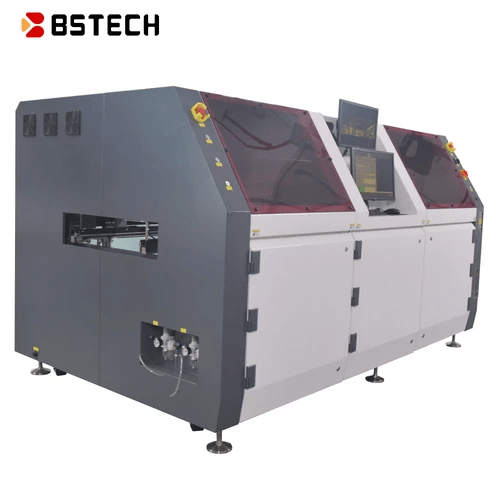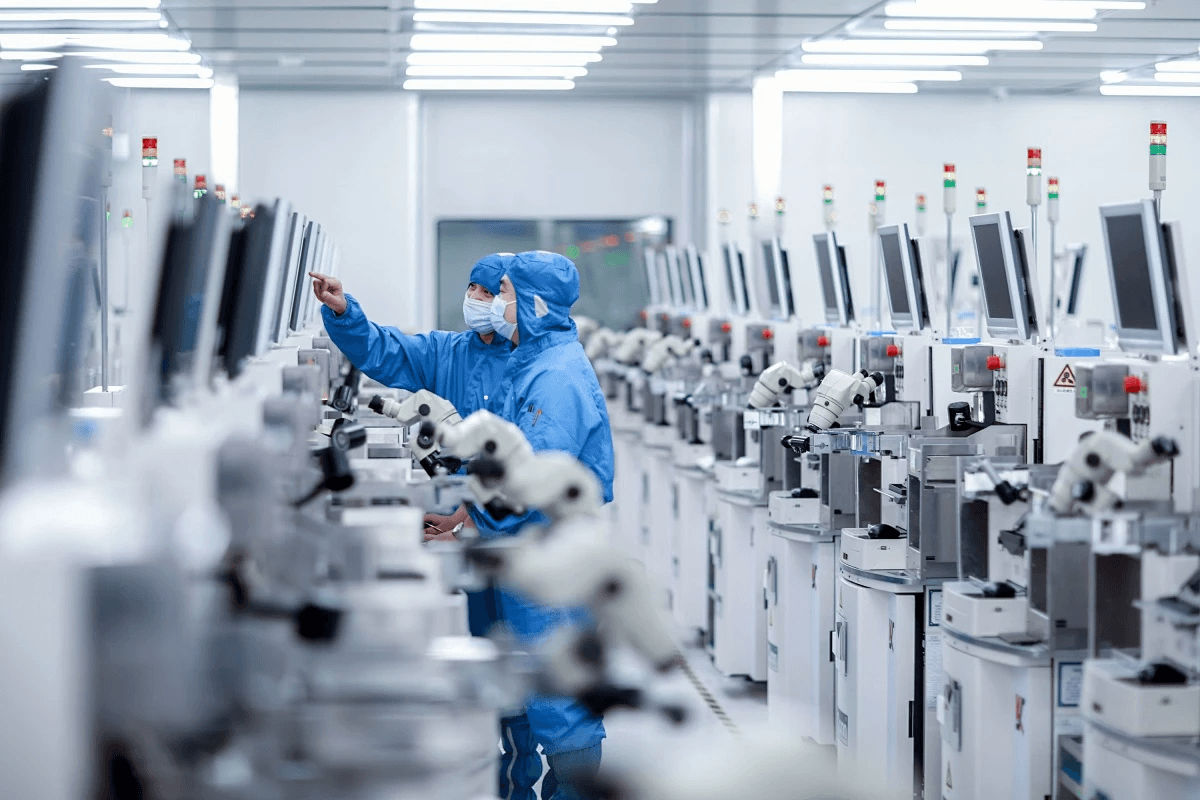Introduction

Reflow soldering is a cornerstone of modern electronics manufacturing, particularly in surface mount technology (SMT). This process involves the melting and solidifying of solder to create reliable electrical connections on printed circuit boards (PCBs). Understanding the essentials of reflow soldering is crucial for anyone involved in SMT production, as it directly impacts product quality and performance.
Understanding Reflow Soldering Essentials
At its core, reflow soldering is a thermal process that uses controlled heat to melt solder paste applied to components and PCBs. The process begins with the application of reflow soldering paste, which contains tiny solder balls suspended in flux. Once heated in a reflow soldering oven, the paste melts and forms strong bonds as it cools down, making it an essential technique for assembling electronic devices.
The Role of Reflow Soldering Machines
Reflow soldering machines are specialized equipment designed to automate the heating process critical for effective SMT assembly. These machines provide precise temperature control and consistent heating profiles that ensure optimal melting of the reflow soldering paste. By utilizing advanced technology, these machines not only enhance efficiency but also minimize defects commonly associated with manual processes.
Key Benefits for SMT Electronics
The advantages of adopting reflow soldering in SMT electronics are manifold. First, it allows for high-density component placement without compromising connection quality, which is vital in today’s compact devices. Additionally, compared to wave soldering methods, reflow offers better control over temperature profiles and reduces thermal stress on sensitive components—making it a preferred choice for many manufacturers seeking reliability and performance in their products.
What is Reflow Soldering?

Reflow soldering is a pivotal technique in the world of electronics manufacturing, particularly within Surface Mount Technology (SMT). This process involves applying solder paste to the printed circuit board (PCB), placing components onto the paste, and then using a reflow soldering oven to melt the solder and create reliable electrical connections. The magic happens when the temperature carefully rises and falls, allowing for perfect bonding without damaging sensitive components.
Defining the Process
At its core, reflow soldering is about creating strong electrical connections between electronic components and PCBs through heat. The process starts with applying reflow soldering paste—a mixture of tiny metal particles and flux—onto designated pads on the PCB. Once components are positioned on these pads, they’re subjected to a controlled heating profile in a reflow soldering oven, which melts the paste into solid joints as it cools.
This method contrasts sharply with wave soldering, where entire boards are submerged in molten solder. In reflow soldering, each component gets its moment in the heat spotlight, ensuring precision that wave methods might struggle to achieve. Thus, this technique has become essential for modern electronics production.
Importance in SMT Production
Reflow soldering plays an indispensable role in SMT production due to its efficiency and effectiveness at handling complex designs with densely packed components. As electronic devices become smaller and more intricate, traditional methods like wave soldering can fall short of meeting quality standards or accommodating design requirements. With reflow processes tailored for specific temperature profiles, manufacturers can achieve consistent results that enhance product reliability.
Moreover, this technique allows for higher throughput rates compared to manual assembly methods or other less efficient processes. By automating much of the work through reflow soldering machines equipped with sophisticated controls, manufacturers can scale up production without compromising quality or increasing labor costs significantly. In essence, embracing reflow technology means staying competitive in a fast-evolving market.
Common Applications in Electronics
Reflow soldering finds its way into various applications across multiple sectors of electronics manufacturing—from consumer gadgets to industrial equipment. It’s particularly prevalent in assembling smartphones and laptops where space is limited yet performance must be maximized; here’s where precise control over reflow temperatures becomes critical for success.
Additionally, automotive electronics increasingly rely on this method due to their need for reliability under challenging conditions—think about all those sensors working tirelessly! Medical devices also benefit from this technology since they require stringent adherence to quality standards; any failure could have serious implications for patient safety.
In summary, whether it's your favorite smartphone or life-saving medical equipment you’re relying on; rest assured that behind-the-scenes processes like reflow soldering are making it all possible—and doing so with style!
The Anatomy of a Reflow Soldering Oven

Reflow soldering ovens are the unsung heroes of surface mount technology (SMT) production, ensuring that components are securely attached to circuit boards. These machines utilize a carefully controlled heating process to melt solder paste, creating strong electrical connections. Understanding the anatomy of a reflow soldering oven is essential for optimizing its performance and achieving high-quality results in electronics manufacturing.
Key Components Explained
A reflow soldering oven is made up of several key components that work together seamlessly. The conveyor system moves the printed circuit boards (PCBs) through various heating zones, while the heating elements regulate temperature precisely. Additionally, there are sensors and control units that monitor the process to ensure optimal reflow soldering conditions, making it easier to achieve consistent results.
Another critical component is the cooling zone, which helps solidify the melted solder quickly after it has flowed into place. This rapid cooling prevents issues like tombstoning or bridging, which can occur if the components shift during cooling. Understanding these components allows manufacturers to troubleshoot issues effectively and maintain high production standards.
How Reflow Ovens Operate
Reflow ovens operate using a series of temperature zones designed for specific phases of the reflow process: preheat, soak, reflow, and cooling. Initially, PCBs enter a preheat zone where they gradually warm up; this helps reduce thermal shock and prepares both the board and components for melting solder paste effectively. Following this stage is the soak phase where temperatures stabilize before reaching peak levels during reflow.
During the reflow stage, temperatures rise sufficiently to melt the solder paste applied earlier on PCB pads; this is where magic happens! The molten solder forms reliable joints between components and pads as it cools down in subsequent zones—this transition from liquid back to solid state must be carefully controlled for optimal results in electronic applications.
Importance of Temperature Control
Temperature control in a reflow soldering oven cannot be overstated—it’s like conducting an orchestra where each note must be played at just the right moment! If temperatures are too low during any phase, you risk incomplete melting of your reflow soldering paste leading to poor connections; conversely, excessive heat can damage sensitive electronic components or create defects on PCBs.
Establishing an ideal temperature profile tailored for specific types of solder pastes ensures quality outcomes across various manufacturing scenarios—this means fewer defects and less wasted material! Moreover, precise temperature management also enhances overall efficiency by reducing cycle times without compromising quality—a win-win situation for any production line.
Reflow Soldering vs Wave Soldering

When it comes to soldering techniques, reflow soldering and wave soldering are two of the most popular methods in the world of electronics manufacturing. Each technique has its own unique characteristics, making them suitable for different applications and production environments. Understanding these differences can help manufacturers choose the right process for their specific needs.
Differences in Technique
Reflow soldering involves applying solder paste to the circuit board before placing components on top, followed by heating in a reflow soldering oven to melt the paste and create electrical connections. In contrast, wave soldering is a bulk process where a circuit board is passed over a wave of molten solder, allowing components to be attached simultaneously. The key distinction lies in how each method applies heat and solder; while reflow relies on controlled heating profiles, wave soldering utilizes direct contact with liquid metal.
Pros and Cons of Each Method
Reflow soldering offers several advantages, including greater precision for surface mount technology (SMT) components and better control over temperature profiles, which leads to higher quality joints when using appropriate reflow soldering temperatures. However, it can be more time-consuming due to the need for pre-application of reflow soldering paste and longer cooling times post-soldering. Conversely, wave soldering is often faster for through-hole components but may struggle with complex SMT designs or smaller boards due to potential bridging or insufficient coverage.
Both methods have their downsides; while reflow requires careful monitoring of temperature settings within the reflow oven to avoid defects like cold joints or overheating sensitive components, wave soldering can lead to issues such as dross formation or uneven coverage if not properly managed. Ultimately, manufacturers need to weigh these pros and cons based on their product requirements and production capabilities.
Choosing the Right Process for Your Production
Selecting between reflow soldering vs wave soldering largely depends on your specific production needs and component types. For high-density boards with various surface mount devices (SMDs), a reflow soldering machine might be your best bet due to its superior precision and adaptability with different types of reflow soldering paste. On the other hand, if you’re working with larger through-hole components or require faster throughput rates without sacrificing quality too much, then wave soldering could be more advantageous.
In conclusion, understanding both techniques allows manufacturers not only to optimize their processes but also enhance product reliability through informed choices about equipment like a reflow oven versus traditional wave systems. By considering factors such as component type, production speed requirements, and overall quality objectives when deciding between these two methods will lead you toward success in electronics assembly.
Optimal Reflow Soldering Temperatures

Getting the temperatures right during reflow soldering is crucial for achieving high-quality solder joints. The process involves carefully managing the thermal profile to ensure that components are adequately heated and solder paste is melted correctly. In this section, we’ll dive into temperature profiles, their impact on quality, and how to properly set up your reflow soldering oven.
Temperature Profiles Defined
Temperature profiles in reflow soldering refer to the specific heating and cooling stages that a PCB experiences during the soldering process. Typically, these profiles consist of preheat, soak, reflow, and cool-down phases, each crucial for ensuring optimal results with your reflow soldering machine. Understanding these stages helps technicians fine-tune their processes to achieve consistent quality while minimizing defects.
Preheating gradually warms the board and components to reduce thermal shock and activate flux in the reflow soldering paste. The soak phase allows for even temperature distribution before reaching peak temperatures during the reflow phase, where solder paste melts and forms connections between components. Finally, cooling solidifies the joints; if done too quickly or slowly, it can lead to issues like cold solder joints or component damage.
Impact of Temperature on Soldering Quality
The temperatures used in a reflow soldering oven significantly influence the overall quality of the final product. If temperatures are too low during any stage of the profile, it may result in inadequate melting of the reflow soldering paste, leading to poor adhesion or cold joints that compromise electrical performance. Conversely, excessively high temperatures can cause component damage or even create defects like tombstoning in surface-mounted devices.
Moreover, achieving an optimal balance ensures that all components are uniformly heated without causing warping or delamination of sensitive materials such as multilayer boards. Understanding how different materials react at various temperatures is essential when comparing reflow soldering vs wave soldering processes; each method has its own thermal sensitivities that can affect outcomes differently based on temperature management strategies employed.
How to Set Up Your Reflow Oven
Setting up your reflow oven involves configuring both hardware settings and software parameters tailored to your specific production requirements. Start by determining an appropriate temperature profile based on factors such as component types used and specifications from your chosen reflow soldering paste manufacturer—this will guide you in establishing ideal peak temperatures for successful melting without risking damage.
Next, calibrate your oven’s zones—ensuring accurate heat distribution across preheat zones through to cooling sections—to match your established profile effectively. Regular monitoring using thermocouples can help track actual versus desired temperatures throughout a run; this data is invaluable for making necessary adjustments mid-process if discrepancies arise.
Lastly, don't forget about maintenance! Periodically check for any obstructions within your machine that may alter airflow patterns or heat distribution which could adversely affect outcomes over time—keeping everything clean ensures consistent performance from your reflow soldering machine.
The Role of Reflow Soldering Paste

Reflow soldering paste is a crucial component in the reflow soldering process, acting as the adhesive that binds electronic components to printed circuit boards (PCBs). This paste consists of a mixture of solder powder, flux, and other additives that help facilitate the reflow process. Understanding the types of soldering paste available and their application techniques can significantly impact the quality of your SMT production.
Types of Soldering Paste Available
There are several types of reflow soldering paste available on the market, each tailored for specific applications and performance requirements. The most common types include lead-based and lead-free pastes; while lead-based pastes offer excellent wetting properties, lead-free alternatives are increasingly popular due to environmental regulations. Additionally, there are specialty pastes designed for specific substrates or temperatures, ensuring optimal performance in various reflow soldering scenarios.
Application Techniques for Best Results
Applying reflow soldering paste correctly is essential for achieving high-quality solder joints. Techniques such as stencil printing are widely used for uniform application, where a stencil allows precise control over the amount of paste deposited on each pad. Other methods like jet printing or dispensing can be employed depending on production volume and complexity; however, consistency in application is key to avoiding defects during the reflow process.
Common Issues with Soldering Paste
Despite its importance, several common issues can arise with reflow soldering paste that may affect overall production quality. For instance, improper storage conditions can lead to changes in viscosity or moisture absorption, impacting how well the paste adheres during reflow soldering. Additionally, problems such as insufficient or excessive paste application can result in cold joints or bridging between components—issues that could easily be avoided with careful monitoring and adjustment throughout the manufacturing process.
Conclusion

Reflow soldering stands as a cornerstone in the world of surface mount technology (SMT), ensuring that electronic components are securely and effectively attached to circuit boards. As we wrap up our exploration, it's crucial to recognize the best practices that can elevate your reflow soldering process, alongside the innovations shaping its future. By understanding the nuances of reflow soldering machines and their operations, manufacturers can achieve optimal results while minimizing defects.
Best Practices for Effective Reflow Soldering
To master reflow soldering, adherence to best practices is essential. First, maintaining precise control over the reflow soldering temperature is vital; this ensures that solder paste melts uniformly without damaging sensitive components. Additionally, regularly calibrating your reflow soldering oven can prevent temperature fluctuations that lead to inconsistent results, thus enhancing overall production quality.
Another key practice involves selecting the right type of reflow soldering paste based on your specific application needs. Different pastes have varying melting points and flow characteristics; knowing which one suits your project will significantly impact performance. Lastly, conducting regular inspections and implementing quality control measures throughout the process will help catch potential issues before they escalate into costly problems.
Innovations in Reflow Soldering Technology
The landscape of reflow soldering technology is evolving rapidly, with new innovations enhancing efficiency and effectiveness in SMT production. One notable advancement includes improved temperature profiling systems within modern reflow soldering ovens that allow for more accurate monitoring and adjustment throughout the process. These systems provide real-time data analytics that help operators fine-tune settings for optimal performance.
Moreover, developments in lead-free solders and advanced reflow soldering paste formulations are paving the way for greener production methods without sacrificing reliability or quality. Innovations such as automated inspection systems integrated into reflow processes also contribute significantly by detecting defects early on—saving time and resources in later stages of manufacturing. Embracing these advancements not only streamlines operations but also positions companies at the forefront of industry standards.
Bensun Technology's Role in SMT Production Excellence
Bensun Technology plays a pivotal role in advancing SMT production excellence through state-of-the-art equipment and solutions tailored for effective reflow soldering processes. With a focus on developing high-performance reflow soldering machines equipped with cutting-edge features like precise temperature control and user-friendly interfaces, Bensun ensures manufacturers can achieve superior results consistently.
Additionally, Bensun's commitment to innovation extends beyond machinery; they actively engage with clients to optimize their use of reflow soldering paste by providing expert guidance on application techniques and troubleshooting common issues. This partnership approach not only enhances product quality but also fosters long-term relationships built on trust and shared success within the electronics manufacturing sector.
